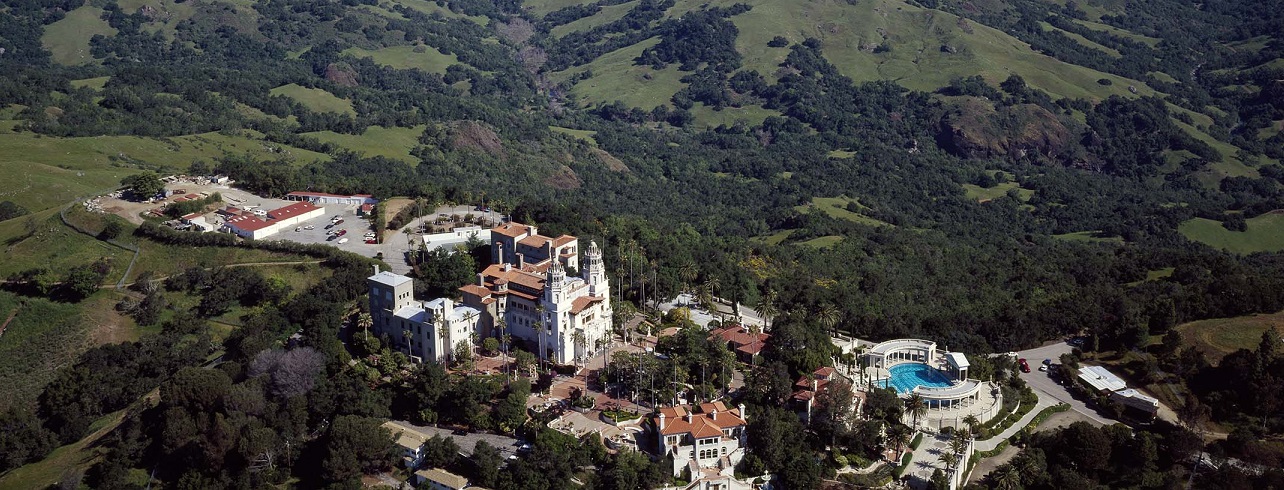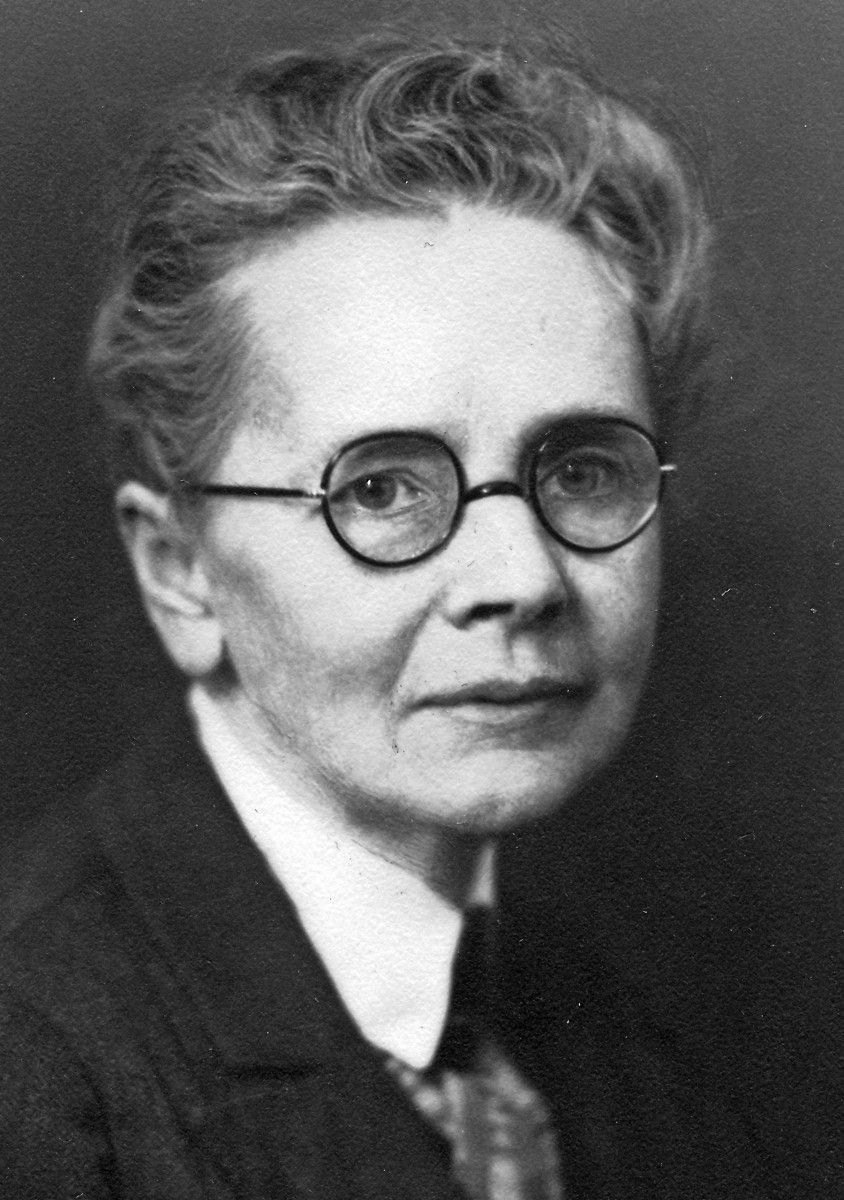Julia Morgan: An intimate biography of Hearst Castle's little-known architect
 Tuesday, November 1, 2022 at 05:46AM
Tuesday, November 1, 2022 at 05:46AM  Hearst Castle, the estate architect Julia Morgan designed for William Randolph Hearst at San Simeon, in California's coastal mountains. Photos by Alexander VertikoffIn 1919, a 47-year-old woman began work designing one of the world’s most impressive estates, a sprawling compound at a 1,600-foot elevation about halfway between San Francisco and Los Angeles.
Hearst Castle, the estate architect Julia Morgan designed for William Randolph Hearst at San Simeon, in California's coastal mountains. Photos by Alexander VertikoffIn 1919, a 47-year-old woman began work designing one of the world’s most impressive estates, a sprawling compound at a 1,600-foot elevation about halfway between San Francisco and Los Angeles.
 Architect Julia MorganWhen architect Julia Morgan died in 1957 at age 85, she had designed an estimated 700 structures — schools, churches, office buildings, hospitals, stores and residences -— most notably La Cuesta Encantada, William Randolph Hearst’s home on “the Enchanted Hill.” More than a century later, what came to be known as Hearst Castle continues to draw throngs of tourists to California from across the globe. Yet many visitors never learned that for nearly three decades a female designer was the planner who oversaw every detail of the estate’s evolving landscape.
Architect Julia MorganWhen architect Julia Morgan died in 1957 at age 85, she had designed an estimated 700 structures — schools, churches, office buildings, hospitals, stores and residences -— most notably La Cuesta Encantada, William Randolph Hearst’s home on “the Enchanted Hill.” More than a century later, what came to be known as Hearst Castle continues to draw throngs of tourists to California from across the globe. Yet many visitors never learned that for nearly three decades a female designer was the planner who oversaw every detail of the estate’s evolving landscape.
It wasn’t until 2014 that Morgan’s lifetime of work was recognized by the American Institute of Architects with its Gold Medal. With the posthumous award, she became the first woman to join the ranks of such revered architects as Charles McKim, Frank Lloyd Wright and Le Corbsier.
In “Julia Morgan: an Intimate Biography of the Trailblazing Architect” (Chronicle Books, $32.50), author Victoria Kastner offers keen insights into Morgan’s life, her career, and the friendly working relationship that shaped Hearst Castle and other properties of the newspaper tycoon; his mistress, Marion Davies; and his mother, Phoebe Apperson Hearst, who attempted in vain to rein in her son’s extravagance.
In addition to his structures and gardens at San Simeon, Hearst installed an extensive zoo, for which Morgan designed bear pits, a giraffe house, open-air shelters and quarters for an elephant called Marianne.
The book is a fascinating read, thoroughly researched and set squarely within its time. Kastner, who was for decades the official historian at Hearst Castle, is a gifted storyteller who taps Morgan’s letters to her family, friends and clients to discuss Morgan’s life, often using the architect’s own words.
Kastner places the reader within the context of Morgan’s role in a chapter of California history — Gold Rush fortunes, earthquakes, the expansion of the University of California in Berkeley (where Morgan was educated), the Bay Area’s development, and the transformation of the Hearst family’s steeply situated coastal ranch getaway. At its peak, the compound was the setting where W. R. Hearst and Davies hosted and entertained Hollywood’s celebrity elite.
 The Roman Plunge, one of Hearst Castle's pools, has Art Deco mosaics in tiles of lapis blue Venetian glass and 22-karat gold. Hearst’s tone in letters to Morgan about the expanding property exemplifies the unfettered imagination of one who has grown up with wealth. He once wrote: “How about a maze in connection to the zoo?” And on another occasion: “I have an idea for a winter pool. We could put a big hot-house down where we were going to build the Persian Gardens ... In the hot house we would have palms, ferns and a whole lot of orchids ... The temperature of the hot-house and the pool too, would be warm on the coldest, bleakest winter day. We would have South Sea Islands on the Hill ... The pool, of course, would be the main attraction, and we might put a turtle and a couple of sharks in to lend verisimilitude.” He adds: “This, except for the sharks, is not as impractical a proposition as it might seem.”
The Roman Plunge, one of Hearst Castle's pools, has Art Deco mosaics in tiles of lapis blue Venetian glass and 22-karat gold. Hearst’s tone in letters to Morgan about the expanding property exemplifies the unfettered imagination of one who has grown up with wealth. He once wrote: “How about a maze in connection to the zoo?” And on another occasion: “I have an idea for a winter pool. We could put a big hot-house down where we were going to build the Persian Gardens ... In the hot house we would have palms, ferns and a whole lot of orchids ... The temperature of the hot-house and the pool too, would be warm on the coldest, bleakest winter day. We would have South Sea Islands on the Hill ... The pool, of course, would be the main attraction, and we might put a turtle and a couple of sharks in to lend verisimilitude.” He adds: “This, except for the sharks, is not as impractical a proposition as it might seem.”
Morgan’s response shows how on board she was with Hearst’s vision: “I like your idea for a combination indoor pool and orchid greenhouse ... There could be a plate glass partition in the pool, and the alligators, sharks, etc., could disport on one side.”
Morgan endeavored to execute even the most outlandish of Hearst’s architectural fantasies. This was not so much an effort to please and retain a wealthy, influential client but because she allowed herself to be caught up in the challenge of making his dreams real. She once described his projects as being able “to play at work.”
But it wasn’t all fun. Kastner reveals that when funds sometimes ran low Morgan would often shortchange herself to pay for the work, materials and international transport involved with Hearst’s properties.
And yet Morgan’s is a story of triumph despite the considerable gender-based limitations placed on women of her time.
To become the first woman to meet the numerous competitive challenges to earn a coveted architecture certificate from l’École des Beaux Arts in Paris, she endured hazing, harassment and denial of opportunities despite her considerable talent. After first completing the École’s grueling entrance exam, she was passed over by jurors who reportedly did not want to encourage young women to believe they could be architects. So she applied again.
Kastner paints a vivid picture of Morgan as an American in Paris during the city’s vibrant Belle Époque era. It was a time when young women could not venture out unescorted, and female artists were banned from exhibiting at the Parisian Salons.
There were so many eligibility requirements to qualify for the École’s exam — let alone win admission — that Morgan would have only 3 years (where others had 6) to complete projects and earn sufficient points to graduate before turning 30, the age at which students were required to leave. She finished in 1901, with just weeks to spare.
“Her strength helped her conquer endless difficulties,” Kastner writes — “stubborn misogynists; family troubles; personal health struggles; and more logistical and construction challenges than we can possibly guess.”
Morgan became a reluctant celebrity. “Her determination and talent were praised in newspapers throughout the English-speaking world,” Kastner notes.
Morgan returned to California to open an architecture firm in 1902 (following architects Mary Nevan Gannon and Alice J. Hands, who in 1894 opened America’s first all-female firm). Morgan was the first woman architect certified in California, helping rebuild after the 1906 earthquake.
 The redwood-shingled exterior of Saratoga Foothill Club is among a number of clubhouses Morgan designed. It complements a surrounding neighborhood as an example of the First Bay Tradition, reflected in Northern California architecture of the period. Over decades, Morgan’s work included many of California’s 20th century YWCA buildings, which at the time housed single working women, providing meals, safe quarters and companionship. Marilyn Monroe, Kim Novak, Rita Moreno and Donna Reed were among the estimated ten thousand actresses who over fifty years stayed at the Hollywood Studio Club, a YWCA dormitory Morgan designed in 1925 for aspiring film stars arriving in Los Angeles.
The redwood-shingled exterior of Saratoga Foothill Club is among a number of clubhouses Morgan designed. It complements a surrounding neighborhood as an example of the First Bay Tradition, reflected in Northern California architecture of the period. Over decades, Morgan’s work included many of California’s 20th century YWCA buildings, which at the time housed single working women, providing meals, safe quarters and companionship. Marilyn Monroe, Kim Novak, Rita Moreno and Donna Reed were among the estimated ten thousand actresses who over fifty years stayed at the Hollywood Studio Club, a YWCA dormitory Morgan designed in 1925 for aspiring film stars arriving in Los Angeles.
In Morgan’s time, marriage often meant that a woman would end her career. (Her sister earned a University of California law degree but chose marriage over law practice.) Kastner writes that Morgan was so devoted to her profession and projects that she never had any romantic relationships.
Still, in her lifetime and decades after her death, Morgan was faulted for never developing a “signature” architectural style. But today she can be considered visionary because of her client-focused approach — now an expected practice among architects.
According to Kastner, Morgan personally met with every client to discuss their wishes rather than sending a subordinate.
 When her mother’s health declined, Morgan built a house for her next to one she had designed in Berkeley for her sister and brother-in-law. Her mother had wanted to remain in her own house, so Morgan fully replicated her mother’s bedroom in the new house, placing furnishings exactly as they had been. Her mother never had to see the nurse’s quarters installed one floor below.
When her mother’s health declined, Morgan built a house for her next to one she had designed in Berkeley for her sister and brother-in-law. Her mother had wanted to remain in her own house, so Morgan fully replicated her mother’s bedroom in the new house, placing furnishings exactly as they had been. Her mother never had to see the nurse’s quarters installed one floor below.
“She believed in herself and in her ability to solve problems,” Kastner writes. “This was the secret to her greatness.”
A $100 Julia Morgan tour is now among more than a dozen Hearst Castle tours. Options to see the museum, maintained by the California parks system since 1958, range from the $30 grand rooms tour to a $1,000 private tour (4 hours) for up to six people.
Win the book: Email us through the contact page on this website by Dec. 21 for a chance to win a copy of "Julia Morgan: The Trailblazing Architect" by Victoria Kastner
 Kimberly L. Jackson | Comments Off |
Kimberly L. Jackson | Comments Off | 